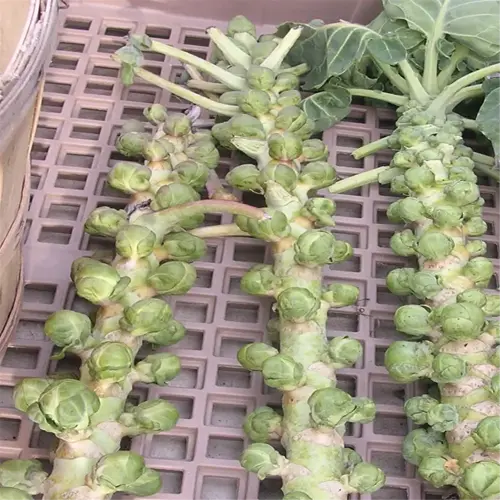What is the secret to growing large cauliflower heads?

Written by
Nguyen Minh
Reviewed by
Prof. Charles Hartman, Ph.D.Cultivating large heads of cauliflower requires precision. I learned this truth after years of failure and error with everything from too much water, which causes black rot, to an inconsistent pH balance leading to stunted heads. To concentrate on three key factors: soil quality, timely blanching, and consistence moisture. Get these right and you will be satisfied with your harvests.
Soil Preparation
- Test and adjust pH to 6.5-7.2 to prevent clubroot
- Mix 3-4 inches of compost into planting beds
- Avoid fresh manure; use aged compost for slow-release nutrients
Blanching Techniques
- Start when heads are 2-3 inches (5-7.6 cm) wide
- Use rubber bands or twine to secure outer leaves
- Check weekly for trapped pests or moisture
Watering Consistency
- Provide 1-1.5 inches (2.5-3.8 cm) weekly
- Use drip irrigation to avoid wetting foliage
- Mulch with straw to retain soil moisture
Soil preparation is absolutely essential, and non-negotiable! Last year I worked in a clay soil that I amended with compost and perlite, and it yielded solid heads that were at least 8 inches in diameter. One suggestion: test your pH regularly. You should check on it at least once a month. Remember, clubroot loves acidity. If your pH drops below 6.5 you will need to apply some lime. Great soil = fewer surprises.
Blanching calls for some careful, intentional attention. The Denali variety is self-blanching, but the Snow Crown was reliant on a manual tying of its leaves. For the colored types, such as Purple Moon, it is fine to skip blanching, since they achieve a darker color even in direct sunlight. Inspect heads about every 3 days; I remember having a ton of slugs destroy my crop mid-season because they were trapped underneath.
Watering needs to be consistent and not sporadic. I use a rain gauge, and soaker hoses supply 1-1.5 inches every week. I found in extreme heat, soaking the garden for 20 minutes each day sustained my plants. Using mulch is critical, as it reduces my watering by over half and helps cool the plants' roots.
Read the full article: How to Grow Cauliflower: 7 Essential Tips for Success

